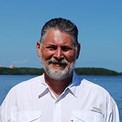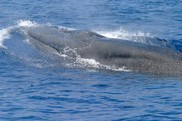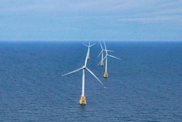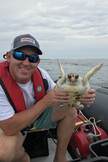|
|
Greetings and Happy National Ocean Month! You’re reading the first issue of our new newsletter—thank you for subscribing. There are so many wonderful things that our team is doing, that I wanted to share our science more broadly.
It’s been quite the year, but our work continues. The last few months have brought many accomplishments. The science center team determined that the Bryde’s whales that inhabit the Gulf of Mexico are, in fact, a separate species. Our staff also contributed to groundbreaking science that resulted in the development of catch advice for Atlantic menhaden based on ecological reference points. This is one of the first examples worldwide of using ecosystem based fisheries management to set fishing limits.
In March, we received results from the Great Red Snapper Count, a $12 million, multi-year study that used state-of-the-art technology to estimate the abundance of red snapper throughout the U.S. Gulf of Mexico. Science center staff were able to rapidly translate the results of that study into catch advice that was used by the Gulf of Mexico Fishery Management Council to set the overfishing limit. It was a landmark effort and proved to be an effective collaboration and a worthy investment in science for this iconic species. Now it is up to us to monitor the trends in red snapper abundance (and other species), and we are up to the task. Despite the challenges of the last year, we are on track to get every one of our flagship surveys back on the water in 2021.
Also in the last year, our leadership team has changed. I’d like to introduce the center’s deputies and chiefs of staff.
-
Lisa Desfosse, Ph.D., is the Deputy Director of Science and Operations. Lisa previously led our Mississippi labs for nine years.
-
John Walter, Ph.D., is the Deputy Director of Science and Council Services. John has 13 years of experience conducting stock assessments. He has provided management advice to regional fisheries councils and to the International Commission for the Conservation of Atlantic Tunas (ICCAT).
-
Trika Gerard, Ph.D., is the Chief of Staff to the Science and Research Director. Trika joined the science center in 2009 as a marine ecologist leading research projects in early life history of fishes.
-
Erica Rule is the Chief of Staff for Science Planning and Operations. Erica joined the science center in 2020 after 21 years developing strategic communications at NOAA’s Atlantic Oceanographic and Meteorological Laboratory.
Be on the lookout for our next issue of Sea Notes later this summer. We anticipate sending these out quarterly, so help us spread the word. You can subscribe to Sea Notes here.
 |
|
Thanks for your continued support and interest,
Clay Porch, Ph.D.
Southeast Fisheries Science Center Director
|
|
|
Gulf of Mexico’s Newest Baleen Whale

Earlier this year we announced that the whale previously known as the Bryde’s whale is actually a new whale species living in the Gulf of Mexico. The team, led by scientists from the science center, provided the first morphological examination of a complete skull from these whales. They identified diagnostic characteristics that distinguish it from the other closely-related baleen whale species. Read more about the history of this species.
|
The Science of Snapper

NOAA is always looking for better and more efficient ways to conduct science by harnessing cutting edge technology. Finding easier ways to collect more data or ensuring the safety of personnel are frequent reasons for this. Read more about how we’re harnessing artificial intelligence and acoustic advanced technologies to study red snapper.
|
Changes in the Wind

A new program, NOAA Fisheries’ Federal Survey Mitigation Program, was recently announced to help address the nation’s climate crisis. The plan will describe commitments from offshore wind developers and the federal government, and develop a timeline for initial actions. Ultimately this will help to meet the administration’s goal to deploy 30 gigawatts of offshore wind in the United States by 2030. For the Southeast Region, this is an unparalleled opportunity to get science in at the beginning of what could be a major change to the system. It is like having the opportunity to turn back the clock to the first offshore oil platform in 1947.
|
|
|
Meet Laura Dias, Marine Mammal Scientist
 |
|
Laura Dias serves as a marine mammal observer and data manager during line-transect large vessel and aerial surveys. She manages the data collected and assists with analysis and publishing. Laura is also an avid hiker and competitive rower. Meet Laura. |
Meet Jason Letort, Fisheries Methods & Equipment Specialist
 |
|
Jason Letort is a gear specialist, with a focus on turtle excluder devices, providing expertise to commercial shrimp fishermen, industry members, and law enforcement. His goal is to conserve sea turtles through gear compliance. Meet Jason. |
|
|
Mark Your Calendar
TED Tuesdays
Every Tuesday through July, the science center’s fishing gear specialists are hosting question and answer webinar sessions and virtual workshops summarizing upcoming skimmer trawl Turtle Excluder Device (TED) requirements. They are able to assist participants with program information and compliance.
For-Hire Electronic Reporting Webinars
Join our monthly question and answer webinars if you have questions about the requirements for For-Hire Electronic Reporting for fishermen in the Southeast Region. Find more information and a full schedule online.
|
|
|
The mission of NOAA's Southeast Fisheries Science Center is to provide the scientific advice and data needed to effectively manage the living marine resources of the Southeast region and Atlantic high seas.
Visit our website
|
|
|
|